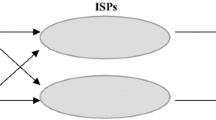Abstract.
Residential broadband options such as cable and digital subscriber lines are growing in popularity. However, evidence suggests that urban areas are receiving the majority of infrastructure investment, thereby leaving many rural locations with few options for broadband access. With access to telecommunication infrastructure becoming an increasingly important component to local economic development, issues of infrastructure equity are significant. This paper explores telecommunication equity and its effect on economic development by addressing the impact of geography on infrastructure investment and growth. A comprehensive database of broadband service providers and data from the Ecom-Ohio project (http://www.ecom-ohio.org), are used to explore broadband access options in the state of Ohio by examining the characteristics of market demand that are driving cable and digital subscriber line infrastructure investment. In addition, this paper develops an explanatory framework for identifying key market characteristics indicative of demand for residential broadband services through the use of statistical models and a geographic information system. Results suggest that income, education, age, location, and competition from alternative broadband platforms influence digital subscriber line infrastructure investment.
Similar content being viewed by others
Author information
Authors and Affiliations
Additional information
Received: November 2001/Accepted: September 2002
Rights and permissions
About this article
Cite this article
Grubesic, T. Inequities in the broadband revolution. Ann Reg Sci 37, 263–289 (2003). https://doi.org/10.1007/s001680300123
Issue Date:
DOI: https://doi.org/10.1007/s001680300123




